National historic site designations
National historic site designations are located in every Canadian province and territory. They can be found in almost any setting, from rural and urban to nature; they may be sacred spaces, archaeological sites, battlefields, heritage houses, districts, places of scientific discovery, and much more.
These sites allow us to learn more about Canadian history, including the diverse cultural communities who make up Canada, and the history and culture of Indigenous peoples.
Tourist information on national historic site designations
Would you like to explore Canada's national historic site designations ?
- If the places you would like to visit are administered by Parks Canada, let us help you plan your trip.
- Most national historic site designations are not administered by Parks Canada, but are the property of municipal governments, religious congregations, community groups, individuals or companies. Some are open to the public, some are not. Be sure to confirm accessibility before visiting.
Protection of national historic site designations
The designation of a national historic site is honorific. It does not legally protect the site, or transfer site ownership or management to Parks Canada. In Canada, protection of heritage property not owned by the federal government is the responsibility of each provincial and territorial government under its respective legislation. Only provincial and territorial governments have jurisdiction over private property, which enables them to pass and enforce legislation extending legal protection to designated properties.
Owners of national historic sites are encouraged to follow the Standards and Guidelines for the Conservation of Historic Places in Canada for any alterations or maintenance of their site. You can download an electronic copy on the Parks Canada website under the Policy and Guidelines section or at the Canadian Register of Historic Places website.
-
List of designated national historic sites that have lost their commemorative integrity
Parks Canada maintains a List of Sites that have Lost their Commemorative Integrity. A designated national historic site is considered to have lost its commemorative integrity when the resources directly related to the reasons for designation have been destroyed or impaired, or the reasons for designation can no longer be effectively communicated.
The following national historic sites have been determined to have lost their commemorative integrity.
Alberta
- Laggan Railway Station, Lake Louise
Designated 1976 - Moved 1976
British Columbia
- Kamloops Junction Railway Station, Kamloops
Designated 1976 - Demolished circa 1985 - Ewan Cattle Barn, Richmond
Designated 1995 - Destroyed by wind storm 1999
Manitoba
- Elaschuk House, Roblin
Designated 1975 - Moved 1987 - Capitol Theatre, Winnipeg
Designated 1991 - Demolished circa 2002 - Empire Hotel, Winnipeg
Designated 1976 - Demolished circa 1980
New Brunswick
- Old Sunbury County Jail, Burton
Designated 1985 - Moved 1989 - Demolished 1992
Newfoundland and Labrador
- Port Blandford Railway Station, Port Blandford
Designated 1976 - Destroyed by fire circa 1979 - Carey House, Witless Bay
Designated 1982 - Demolished 1984
Ontario
- Plymouth Square, Kingston
Designated 1970 - Demolished 1973 - Rideau Street Convent & Chapel, Ottawa
Designated 1972 - Demolished circa 1972 - Sparks House, Ottawa
Designated 1954 - Demolished circa 1954 - Darlingside, Rockport
Designated 1992 - Complex demolished circa 2008-2014 - Sahkahjewaosa / Garden River Band Council House, Sault Ste. Marie
Designated 1986 - Destroyed by fire circa 1986 - Finish Labour Temple, Thunder Bay
Designated 2011- Destroyed by fire 2021 - Thomson Building, Timmins
Designated 1987 - Demolished 1995
Quebec
- Bertier Railway Station, Bertier
Designated 1976 - Demolished 2006 - L’Islet Railway Station (Grand Trunk), L’Islet
Designated 1976 - Demolished (date unknown) - Le Moyne / Heroux / Longueuil House, Longueuil
Designated 1958 - Demolished circa 1999 - Galt House, Sherbrooke
Designated 1962 - Demolished circa 1966 - Canadian Pacific Forest Products Mill, Trois-Rivères
Designated 1991 - Demolished 2002 - Jack House, Vanier
Designated 1969 - Demolished circa 2004
Saskatchewan
- Biggar Railway Station (Grand Trunk), Biggar
Designated 1976 - Demolished 2018 - Fleming Lake of the Woods Grain Elevator, Fleming
Designated 2008 - Destroyed by fire 2010 - Capital Theatre, Saskatoon
Designated 1979 - Demolished December 1979
No associated province or territory
- HMCS Ottawa
Designated 1993 - Demolished 1994
- Laggan Railway Station, Lake Louise
National historic site designations
Profiled below are some of the national historic sites that have been designated through the recommendations of the Historic Sites and Monuments Board of Canada (HSMBC). Note that additional national historic designations will continue to be added to this page.
A full list of national historic persons, places and events can be found on the Directory of Federal Heritage Designations.
This list is sorted by alphabetical order. You can sort designated national historic sites by province/territory.
| Image | National Historic Site | Province/ Territory |
|---|---|---|
Dominion Observatory Complex
 |
Dominion Observatory ComplexAn outstanding collection of early 20th century scientific buildings and landscape elements that supported astronomical research across the country in practical astronomy in the areas of surveying, time service and geophysics. Image copyright : © Parks Canada |
Ontario |
Penman Textile Mill
 |
Penman Textile MillThis stately mill complex, along with other Penman Manufacturing Company mills on the Grand River and beyond, comprised the largest woollen knit goods producer in Canada during the late 19th and early 20th centuries. Image copyright : © Parks Canada |
Ontario |
L.M. Lucy Maud Montgomery Cavendish
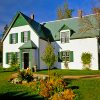 |
L.M. Montgomery's CavendishBringing together the real and imaginary worlds of Lucy Maud Montgomery (1874-1942), this landscape is intimately associated with her formative years and prolific career as a writer. Image copyright : © Parks Canada |
Prince Edward Island |
Fort Richelieu
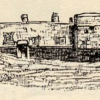 |
Fort RichelieuThe Historic Sites and Monuments Board of Canada reviewed this designation in 2022. Image copyright : © A. Leblond de Brumath |
Quebec |
Anse Amour
 |
L'Anse AmourThe Historic Sites and Monuments Board of Canada reviewed this designation in 2022. Image copyright : © Government of Newfoundland and Labrador |
Newfoundland and Labrador |
Skoki Ski Lodge
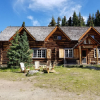 |
Skoki Ski LodgeThe Historic Sites and Monuments Board of Canada reviewed this designation in 2022. Image copyright : © Parks Canada |
Alberta |
Fort Laprairie
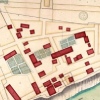 |
Fort LaprairieThe Historic Sites and Monuments Board of Canada reviewed this designation in 2021. Image copyright : © Creative Commons |
Quebec |
Montmorency Park
 |
Montmorency ParkThe Historic Sites and Monuments Board of Canada reviewed this designation in 2022. Image copyright : © Destination Québec cité |
Quebec |
St. Anne Anglican Church
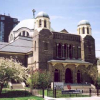 |
St. Anne's Anglican ChurchSt. Anne's vibrant wall paintings make this church a place of national historic significance. They were executed in 1923 by ten Toronto artists, including J.E.H. MacDonald, F. Varley and F. Carmichael from the Group of Seven. Image copyright : © Ontario Heritage Trust |
Ontario |
Vancouver Chinatown
 |
Vancouver's ChinatownFirst settled in the 1880s, Vancouver’s Chinatown is one of the oldest and largest in Canada. Its evolution, fabric, and continued vitality reflect the contributions and struggles of Chinese Canadians over the years. Image copyright : © Wikimedia Commons |
British Columbia |
Mon Keang School
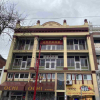 |
Mon Keang SchoolMon Keang School offered Chinese-language education to children and youth in Vancouver’s Chinese community, helping create a cultural link with China during a period when Chinese people in Canada faced considerable racism, and when immigration from China was severely restricted. Image copyright : © Charlotte Hung |
British Columbia |
Rockcliffe Park Historic District
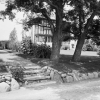 |
Rockcliffe Park Historic DistrictWell-established and affluent residential neighborhood in Ottawa with a layout strongly influenced by the region’s topography and woodland areas. Image copyright : © Library and Archives Canada / William James Topley |
Ontario |
Hamilton Waterworks
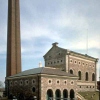 |
Hamilton WaterworksThis dignified building, reminiscent of the style of a Roman aqueduct, houses one of Canada's greatest surviving engineering achievements of the mid-19th century, the Hamilton Waterworks. Image copyright : © Parks Canada |
Ontario |
George Brown House
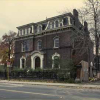 |
George Brown HouseThis elegant house was built from 1874 to 1876 for George Brown, eminent journalist, politician, and Father of Confederation. Image copyright : © Parks Canada |
Ontario |
Nazrey African Methodist Episcopal Church
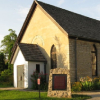 |
Nazrey African Methodist Episcopal ChurchIn 1848, refugees from American slavery built this church by hand to serve Amherstburg's growing Black community. Image copyright : © Yoho2001 / Creative Commons |
Ontario |
Brookside Cemetery
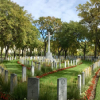 |
Brookside CemeteryBrookside Cemetery in Winnipeg is among the oldest and largest examples of the garden cemetery tradition in Western Canada. Image copyright : © Parks Canada / Jeffrey Thorsteinson |
Manitoba |
National Arts Centre
 |
National Arts CentreDesigned by Fred Lebensold, the National Arts Centre (NAC) opened in 1969, offering state-of-the-art performing spaces and technology in its main venues, especially Southam Hall. Image copyright : © Parks Canada / Zaid Al Atiyat |
Ontario |
CCGS Alexander Henry
 |
CCGS Alexander HenryThe former Canadian Coast Guard Ship (CCGS) Alexander Henry is a retired light icebreaker, buoy tender, and navigational aid ship that served on the Great Lakes from 1959 to 1985. Image copyright: © Transportation Museum of Thunder Bay |
Ontario |
Chateau Laurier
 |
Château LaurierThe Château Laurier National Historic Site of Canada is an early-20th-century hotel located across from the Former Union Railway station in downtown Ottawa, Ontario. Image copyright: © Parks Canada |
Ontario |
Skmaqn Port la Joye Fort Amherst
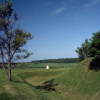 |
Skmaqn–Port-la-Joye–Fort AmherstAt this site, the Mi’kmaq met the French in the 18th century to renew their friendship and military alliance at a time when the French and British empires were fighting for supremacy in North America. Image copyright: © Parks Canada |
Prince Edward Island |
de Gannes Cosby House
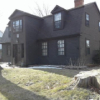 |
de Gannes-Cosby HouseThis house is a rare example of a pre-Deportation residence in Acadie. Image copyright: © Parks Canada / Kate MacFarlane |
Nova Scotia |
TawTaar Winter Crossing Teslin Crossing
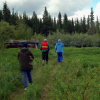 |
T'äw Tà'är (Winter Crossing / Teslin Crossing)The history of this meeting place and village, also known as Winter Crossing, illustrates how the Ta’an Kwäch’än have lived on, valued, and shaped their land in cooperation with their neighbours. Image copyright: © Parks Canada / D. Neufeld |
Yukon |
Claverleigh
 |
ClaverleighBuilt in 1871 as a parish rectory, this charming house is a significant example of a Gothic Revival villa in Victorian Canada. Image copyright: © Parks Canada / Chris Johnstone |
Ontario |
Trochek
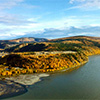 |
Tr'ochëkTr'ochëk lies at the heart of Tr'ondëk Hwëch'in territory and is a gathering place that is valued for its rich natural resources and its significance to the community in sustaining and transmitting its heritage. Image copyright: © Parks Canada / David Neufeld |
Yukon |
Battle of Cut Knife Hill
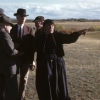 |
Battle of Cut Knife HillOn May 2, 1885, after the relief of Battleford, Col. W.D. Otter and a flying column of 305 men advanced on Poundmaker's reserve at Cut Knife where the Cree and Assiniboine bands of Battleford Agency were gathered. Image copyright: © Photo courtesy of the Saskatchewan History & Folklore Society |
Saskatchewan |
Discovery Claim (Claim 37903)
 |
Discovery Claim (Claim 37903)Discovery Claim is the place where the Klondike gold rush began, on Bonanza Creek, a tributary of the Klondike River near the town of Dawson, Yukon Territory. Image copyright: © Parks Canada / John Gould |
Yukon |
Grosse Ile and the Irish Memorial
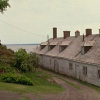 |
Grosse Île and the Irish MemorialGrosse Île and the Irish Memorial National Historic Site commemorates the significant waves of immigration welcomed to Canada between the opening of the 19th century and the First World War. Image copyright: © Parks Canada |
Quebec |
Anse aux Meadows
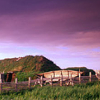 |
L'Anse aux MeadowsDiscovered in 1960, this is the first authenticated Norse site found in North America and could be Leif Ericsson's short-lived Vinland camp. Image copyright: © Parks Canada / Dale Wilson |
Newfoundland and Labrador |
Fortress of Louisbourg
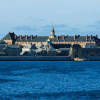 |
Fortress of LouisbourgFortress of Louisbourg is the largest reconstructed 18th-century French fortified town in North America. Image copyright: © Parks Canada |
Nova Scotia |
Mehtawtik Meductic Village
 |
Mehtawtik (Meductic) VillageMehtawtik (Meductic) Village overlooks the former location of Mehtawtik, principal village of the Wəlastəkokewiyik (Maliseets) on the banks of the Wəlastəkw (Saint John River), standing at the end of a portage that provided an important link to an inland waterway. Image copyright: © Parks Canada |
New Brunswick |
St. saint Patrick Basilica
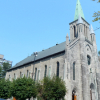 |
St. Patrick's BasilicaA fine early example of Gothic Revival architecture, Saint Patrick's Basilica was erected between 1843 and 1847 for the city's Irish community. Image copyright: © Luc Brunelle / Ministère de la Culture et des Communications |
Quebec |
Royal Manitoba Theatre Centre
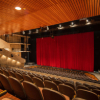 |
Royal Manitoba Theatre CentreIn 1970, this structure was built to house the Manitoba Theatre Centre, a group founded in 1958 that has made a significant and lasting contribution to the development of regional theatre. Image copyright: © Jerry Grajewski |
Manitoba |
Griffin House
 |
Griffin HouseBuilt in 1827, this home is associated with Black settlement in British North America during the first half of the 19th century. Image copyright: © Parks Canada / M D'Abramo |
Ontario |
Sandwich First Baptist Church
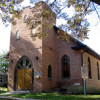 |
Sandwich First Baptist ChurchErected in 1851 on land donated by the Crown, the Sandwich First Baptist Church represents the once numerous Black border-town churches which were built to serve the rapidly increasing numbers of Underground Railroad settlers. Image copyright: Public Domain from Flickr / jodelli |
Ontario |
Salem Chapel British Methodist Episcopal Church
 |
Salem Chapel British Methodist Episcopal ChurchBuilt in 1855, it was an important centre of 19th-century abolitionist and civil rights activity in Canada. Image copyright: © Wayne Adam |
Ontario |
Crow Nest Officers Club
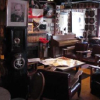 |
Crow's Nest Officers' ClubThis private social club brought together Allied naval officers and their Merchant Navy counterparts in order to bolster their effectiveness on the high seas. Image copyright: © Parks Canada / Nicolas Miquelon |
Newfoundland and Labrador |
Kiix̣in Village and Fortress
 |
Kiix̣in Village and FortressKiix̣in was the traditional capital of the Huu-ay-aht, one of the Nuu-chah- nulth peoples. Image copyright: © Huu-ay-aht First Nations |
British Columbia |
Shoal Tower

|
Shoal TowerBritish military engineers designed Shoal Tower and three other Martello towers built between 1846 and 1848 to strengthen the Kingston fortifications Image copyright: © Parks Canada / Cobi Sharpe |
Ontario |
Africville
|
AfricvilleFor over a century African Canadians settled here, developing an independent community centred around church and family. Image copyright: © Parks Canada / Nathalie Ouellette |
Nova Scotia |
Gooderham and Worts Distillery
|
Gooderham and Worts DistilleryThe seeds of Canada's largest 19th-century distilling firm were sown in 1837 when a still was set up on this site to convert surplus grain from an 1832 grist mill into whisky. Image copyright: © Parks Canada / Erika Sampson |
Ontario |
Gulf of Georgia Cannery
|
Gulf of Georgia CanneryFor thousands of years the fishery has been vitally important to people on Canada's west coast. Image copyright: © Giovanni Martorella |
British Columbia |
Amherstburg First Baptist Church |
Amherstburg First Baptist ChurchConstructed by 1848–1849, at a terminus of the Underground Railroad near the United States border, this church offered sanctuary to African Americans fleeing slavery and helped foster a distinctive Black Baptist tradition in Ontario. |
Ontario |
Apothecaries Hall
|
Apothecaries HallApothecaries Hall was designated a national historic site because from 1810 to 1986 an apothecary shop was operated on this site, making it one of the oldest continually operated pharmacies in Canada. Image copyright: © Parks Canada / J. Butterill |
Prince Edward Island |
Buxton Settlement
|
Buxton SettlementThis cultural landscape, through the retention of land-use patterns and built resources, speaks to the successful realization of the block or planned refugee settlement in Canada; the cultural landscape continues as a living memorial to its founders and to the courage of every Underground Railroad refugee who took their life in their hands and chose Canada as their home. |
Ontario |
R. Nathaniel Dett British Methodist Episcopal Church
|
R. Nathaniel Dett British Methodist Episcopal ChurchAn important community icon, this chapel bares witness to the early black settlement of the Niagara region and marks the role of the church in assisting newly arrived Underground Railroad refugees. Image copyright: © Parks Canada / S. Ricketts |
Ontario |
Massey Hall
|
Massey HallSince its opening in 1894, massey Hall has served as one of Canada's most important cultural institutions. A gift to Toronto from wealthy industrialist Hart Massey, it provided the city with professional concert facilities. Image copyright: © Parks Canada / Jim Molnar |
Ontario |
Pier 21
|
Pier 21This site witnessed the arrival of approximately one million immigrants, who have enriched the cultural mosaic of Canada. Image copyright: © Parks Canada / Ian Doull |
Nova Scotia |
Rideau Canal
|
Rideau CanalBuilt between 1826 and 1832, the Rideau Canal is the best-preserved, fully operational example from North America’s great canal-building era. |
Ontario |
Signal Hill
|
Signal HillSignal Hill was designated a national historic site because it is importantly associated with Canada’s defence and communications history. Image copyright: © Parks Canada / F. Bergeson |
Newfoundland and Labrador |
Former Muscowequan Indian Residential School
|
Former Muscowequan Indian Residential SchoolThe large, three-storey former school building was built in 1930-31 to replace residential school buildings dating to the late-19th century, and remained open until 1997. Image copyright: © Parks Canada / Allison Sarkar |
Saskatchewan |
Former Shingwauk Indian Residential School |
Former Shingwauk Indian Residential SchoolOpened in 1875 by the Anglican Church, Shingwauk IRS was part of the system of residential schools in Canada. This system was imposed on Indigenous Peoples by the federal government and certain churches and religious organizations, who worked together in a deliberate effort to assimilate Indigenous children and convert them to Christianity by separating them from their families, cultures, languages, and traditions. Image copyright: © Parks Canada / Nathalie Ouellette |
Ontario |
Magog Textile Mill |
Magog Textile MillOnly 19th century mill where the entire process of spinning, weaving, bleaching and printing was carried on at one site; built in 1883. Image copyright: © Historical Society of Magog / Fonds Studio RC |
Quebec |
Newfoundland National War Memorial 
|
Newfoundland National War MemorialUnveiled in 1924 to commemorate the Dominion of Newfoundland’s contributions to the First World War, the Newfoundland National War Memorial is an imposing monument featuring a rare combination of allegorical and realistic bronze sculptures designed by British artists Gilbert Bayes and Ferdinand Victor Blundstone. Image copyright: © Parks Canada / Sean Graham |
Newfoundland and Labrador |
Adelaide Hunter Hoodless Homestead
|
Adelaide Hunter Hoodless HomesteadBorn in Ontario, Adelaide Hoodless sought to release the full potential of women for social action. |
Ontario |
Chapais House
|
Chapais HouseChapais House was built in 1833 for the merchant Jean-Charles Chapais Sr. (1811–1885), one of the Fathers of Confederation. Image copyright: © Frédéric Roy / Ministère de la Culture et des Communications |
Quebec |
Chiefswood
|
ChiefswoodCompleted in 1856, Chiefswood owes its importance to its architecture and the prominence of the people who lived here. |
Ontario |
Erland Lee (Museum) Home 
|
Erland Lee (Museum) HomeThis 19th-century farmhouse is the birthplace of Women's Institutes (WI), an organization that played a vital role in thousands of small communities. Image copyright: © Parks Canada / Dianne Dodd |
Ontario |
John and Olive Diefenbaker Museum |
John and Olive Diefenbaker MuseumBuilt circa 1912, the John and Olive Diefenbaker Museum in Prince Albert, Saskatchewan, was John Diefenbaker’s home from 1947 to 1957. |
Saskatchewan |
Louis Joseph Papineau
|
Louis-Joseph Papineau National Historic SiteBuilt in 1785, this stone house has the rectangular shape and gable roof typical of contemporary urban architecture in Quebec. |
Quebec |
Central Memorial Library and Park
|
Central Memorial Library and ParkCentral Memorial Library and Park, located just south of Calgary’s downtown, opened to the public in 1912 and reflect official efforts to create an attractive and cultured new city in the west. |
Alberta |
Reader Rock Garden
|
Reader Rock GardenEstablished in 1913 and developed until 1942, this garden is a showcase for the horticultural, ecological, and aesthetic possibilities of gardening in the harsh climate of Calgary. Image copyright: © Parks Canada / J. Cousineau |
Alberta |
Miners Union Hall 
|
Miners’ Union HallLocated at 1765 Columbia Avenue in Rossland, British Columbia, the Miners' Union Hall was built in 1898 to serve as a meeting place for Local 38 of the Western Federation of Miners. Image copyright: © Parks Canada / Christine Boucher |
British Columbia |
Tsekwa |
Tse’K’waTse’k’wa is an exceptional archaeological site in northeastern British Columbia that has contributed to the understanding of environmental changes and human settlement from the end of the last glacial period (12,500 years ago) to 1,000 years ago. Image copyright: © Parks Canada / M. Stopp |
British Columbia |
Uplands
|
UplandsUplands is a residential subdivision of 188 hectares located in the northeastern section of Oak Bay, the oldest suburban municipality in Greater Victoria. Image copyright: © Dr. Larry McCann |
British Columbia |
Vancouver Japanese Language School
|
Vancouver Japanese Language SchoolThe Vancouver Japanese Language School, located at 487 Alexander Street, was the first and largest Japanese language school in Canada and one of 50 such schools in use before 1941. Image copyright: © Parks Canada / Jennifer A. Cousineau |
British Columbia |
Former Portage La Prairie Indian Residential School
|
The former Portage La Prairie Indian Residential SchoolBuilt in 1914-1915, the former Portage La Prairie Indian Residential School is located on Keeshkeemaquah Reserve, part of the reserve lands of Long Plain First Nation. Image copyright: © Parks Canada / Allison Sarkar |
Manitoba |
Our Lady of the Assumption Cathedral |
Our Lady of the Assumption CathedralDesigned and built in 1939-1940, Our Lady of the Assumption Cathedral speaks to the history of the Acadian people. Decorative elements related to their religious and secular history are found throughout the cathedral; these include an exterior sculpture of the Virgin Mary, patron saint of the Acadians, and stained glass windows depicting significant religious and historical events. Image copyright: © Radio Canada |
New Brunswick |
Beinn Bhreagh Hall 
|
Beinn Bhreagh HallBuilt in 1892-93, Beinn Bhreagh Hall (BBH) was the summer residence, estate, and laboratory of inventor and scientist Alexander Graham Bell and his wife, Mabel Bell. |
Nova Scotia |
Former Shubenacadie Indian Residential School
|
The former Shubenacadie Indian Residential SchoolThe former Shubenacadie Indian Residential School was built in 1928-29 in the Sipekni’katik district of Mi’kma’ki, at the top of a small hill between Highway 2 and the Shubenacadie River overlooking the village of Shubenacadie, Nova Scotia, and 7 kilometres from Sipekne’katik First Nation (Indian Brook). Image copyright: © Sisters of Charity / Halifax / Congregational Archives |
Nova Scotia |
Truro Old Normal College 
|
Truro Old Normal CollegeA major landmark in downtown Truro, this impressive, three-storey brick building is an excellent example of Second Empire architecture. Designed by Nova Scotia architect Henry Frederick Busch, it features a mansard roof, a well-proportioned central pavilion, pedimented gable dormers, ornate brackets under its pronounced eaves, and arched windows. Image copyright: © Parks Canada / C. Boucher |
Nova Scotia |
David Dunlap Observatory
|
David Dunlap ObservatoryWhen it opened in 1935 in what was then an isolated setting 20 kilometres north of Toronto in Richmond Hill, Ontario, the David Dunlap Observatory (DDO) featured the world’s second-largest telescope and was central to establishing academic astronomy in Canada. Image copyright: © Parks Canada / Jennifer A. Cousineau |
Ontario |
Former Paris Town Hall
|
Former Paris Town HallBuilt in 1854, according to the plans of architect John Maxwell, this former town hall is a rare Canadian example of a civic building in the Gothic Revival-style. Image copyright: © County of Brant Public Library |
Ontario |
Hart Massey House
|
Hart Massey HouseThe heritage value of Hart Massey is based on its architectural and environmental interests. |
Ontario |
Park House
|
Park HousePark House, an 18th-century dwelling located on the commercial main street of Amherstburg, Ontario, is considered one of the oldest houses in the region. Image copyright: © Parks Canada / Jennifer A. Cousineau |
Ontario |
Spadina
|
SpadinaBegun in 1866 for Toronto entrepreneur James Austin and his wife Susan Bright Austin, this Toronto landmark is a rare example of a country estate and villa transformed into an opulent Edwardian residence. Image copyright: © Parks Canada / Jennifer A. Cousineau |
Ontario |
Cormier House
|
Cormier HouseLocated at 1418 Pine Avenue West in Montréal, Cormier House is a spectacular example of an Art Deco residence. |
Quebec |
La Petite Ferme du cap Tourmente 
|
La Petite-Ferme du cap TourmenteLa Petite-Ferme is located in a landscape of remarkable beauty, where the St. Lawrence River meets the great coastal marsh and the tidal plain. Image copyright: © Parks Canada / J. Dufresne |
Quebec |
Village of Val Jalbert
|
The Historic Village of Val-JalbertFounded in 1901 around a pulp and paper mill, and deserted since 1927, the village of Val-Jalbert is a prime example of an early 20th century pulp and paper industry company town. Image copyright: © Parks Canada / Christine Boucher |
Quebec |
Roger Gaudry Building
|
Roger Gaudry Building, Université de MontréalLocated at the heart of the Université de Montréal campus, the Roger Gaudry Building is a prominent Montréal landmark. |
Quebec |
Gillies Grove and House |
Gillies Grove and HouseGillies Grove is one of the few remaining accessible Ottawa Valley woodlots with significant stands of old growth white pine, long the mainstay of the region’s lumber industry. |
Ontario |
Montreal Botanical Garden |
Montréal Botanical GardenFounded in 1931, this garden is the work of renowned botanist Brother Marie-Victorin, who initiated and directed the project, and landscape architect Henry Teuscher, who conceived the design. Image copyright: © Parks Canada / Nathalie Clerk |
Quebec |
Jardins de Metis |
Jardins de MétisCreated by Elsie Reford between 1926 and 1958, these gardens are an inspired example of the English art of the garden. |
Quebec |
Royal Botanical Gardens of Canada |
Royal Botanical Gardens of CanadaThe Royal Botanical Gardens National Historic Site is an extensive botanical garden that was developed over the course of the 20th century. Image copyright: © National Film Board of Canada / Library and Archives Canada |
Ontario |
Butchart Gardens |
Butchart GardensButchart Gardens National Historic Site is an internationally-known public attraction that has been open to visitors since 1904. Image copyright: © Parks Canada / M. Trépannier |
British Columbia |
Halifax Public Gardens |
Halifax Public GardensThe Halifax Public Gardens National Historic Site is one of the rare surviving Victorian gardens in Canada. Image copyright: © Photographer Markjt |
Nova Scotia |
Alexander Graham Bell |
Alexander Graham Bell National Historic SiteAlexander Graham Bell National Historic Site consists of a 20th-century museum building containing Bell memorabilia, set on a 10 hectare property overlooking Baddeck Bay, part of Bras d'Or Lake, and Beinn Bhreagh, Alexander Graham Bell's summer home. |
Nova Scotia |
Abbotsford Sikh Temple |
Abbotsford Sikh TempleIn 1911, determined Sikh pioneers from India built this temple, or Gurdwara, with lumber carried from the nearby sawmill where many of them worked. Image copyright: © Parks Canada / Danielle Hamelin |
British Columbia |
Tilting |
TiltingTilting National Historic Site is an outport landscape created by a coastal fishing community on the east coast of Fogo Island in Notre Dame Bay on Newfoundland’s northeast coast. Image copyright: © Parks Canada / Rhona Goodspeed |
Newfoundland and Labrador |
Vimy Ridge |
Vimy RidgeFor Canadians the taking of Vimy Ridge stands as a great feat of arms, an exceptional example of courage and sacrifice, and an important milestone in the development of their nation. |
France |
Wasyl Negrych Pioneer Homestead |
Wasyl Negrych Pioneer HomesteadWasyl Negrych Homestead National Historic Site is believed to be one of the most complete and best-preserved example of an early Ukrainian farmstead in Canada. |
Manitoba |
University College |
University CollegeThe University College National Historic Site, built between 1856 and 1859, is associated with both the development of the University of Toronto, and with a national system of non-denominational institutions of higher learning supported by government. |
Ontario |
Fall caribou crossing
|
Fall caribou crossingFall Caribou Crossing National Historic Site spans a section of the lower Kazan River (Harvaqtuuq) between the Kazan Falls and the narrows in Thirty Mile Lake (Quukilruq) in the Territory of Nunavut. |
Nunavut |
Royal Botanical Gardens
|
Royal Botanical GardensThe Royal Botanical Gardens National Historic Site is an extensive botanical garden that was developed over the course of the 20th century. Image copyright: © Mark Zelinski |
Ontario |
Asinaipi writing on stone
|
Áísínai'piÁísínai'pi National Historic Site, also known as Writing-on-Stone Provincial Park, is located on the Milk River in southern Alberta 150 km east of the Rocky Mountains. Image copyright: © Photo courtesy of Alberta Parks |
Alberta |
Fortifications of Quebec
|
The Fortifications of QuébecThe principal military stronghold in Canada during the colonial period, Québec City was protected by an elaborate defence system developed between 1608 and 1871. |
Quebec |
Victoria Chinatown
|
Victoria's ChinatownThe oldest and most intact Chinatown in Canada, this district represents an important chapter in the complex history and heritage of Chinese Canadians. Image copyright: © Photographed by Barry Swackhamer |
British Columbia |
S.S. SS Klondike
|
S.S. KlondikeThe largest vessel ever to ply the Canadian portion of the Yukon River, this sternwheeler was built by the British Yukon Navigation Co. and launched at Whitehorse in 1937 to replace her namesake, which sank the year before. |
Yukon |
Mount Pleasant Cemetery 
|
Mount Pleasant CemeteryDesigned by Henry Adolph Engelhardt and officially opened in 1876, this cemetery is an outstanding example of landscape design inspired by the European and American garden cemeteries of the 19th century. |
Ontario |
Want to see more heritage designations?
Search through over 3,600 designations listed in the Directory of Federal Heritage Designations (DFHD)
The Directory of Federal Heritage Designations offers a complete list of federal designations stemming from various programs managed by Parks Canada. It includes information on designated persons, places, and events of national historic significance under the National Program of Historical Commemoration, as well as railway stations, lighthouses, and federal buildings that are of national historic value or interest.
Related links
- Asian heritage in Canada
- Inclusive commemorations initiative
- National historic events
- Heritage lighthouses in Canada
- Heritage railway stations of Canada
- National Program for the Grave Sites of Canadian Prime...
- Residential schools in Canada
- Commemorative plaques
- Submit a nomination
- Review of national historic designations
- Funding for heritage places
- Resources
- Contact us
- Date modified :